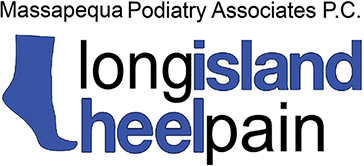We have this fantastic phrase about being "rubbed the wrong way." The origin likely stems from the fact that cats only like to be stroked from head to tail. Go the opposite direction and you're bound to have an irritated (at best) feline on your hands.
Of course, with something like a bunion, there's simply no "right way" of being rubbed. Bunins are easily irritated with almost any kind of friction. This can be the source of tremendous discomfort and even cause you pain, but there are things that can be done about that!
Your first step in relieving bunion pain is to understand this condition, and we're here to help.
Bunions can be misunderstood in a couple of different ways. For one thing, the root cause isn't what most people think it is. As anohter, surgery isn't always the answer. And we must refute the misconception they only happen to women right off the bat.
Yes, women are more likely (by far, actually) to develop bunions than are men, but the fact of the matter is that guys can have this problem, too. Further, kids can start to develop bunions as well (so it's not just a problem for adult females).

The Signs and Problems Presented by Bunions (and Bunionettes)
Now, certain foot problems simply have an abnormal appearance. Fungal toenails are a prime example of that. Other issues affect how your feet funcion. Some conditions combine the two – and such is the case with bunions.
The most quickly identifiable symptom of a bunion is the bunion itself. There is an unusual bulging bump located next to the base of the big toe. This bump will often be sore, reddened, and swollen.
We know it can be embarrasing to look down and see your toe angled inward. Appearance isn't necessarily painful, however. Sure, it can be a "quality of life" matter when a bunion means you don't want to wear sandals or open-toed shoes like you normally would, but there's certainly more to the story,
Corns and calluses are more likely to develop on a bunion due to its unusual structure. Depending on the case, either persistent or intermittent pain may be present. A bunion can also lead to restricted movement in an affected toe.
Whereas a bunion is a displaced joint at the base of the big toe, the same basic condition can happen on the outer edge of the foot, at the base of the little toe. When this condition presents itself, it is known as a bunionette or a "tailor's bunion."
The tailor's bunion moniker comes from the old days, when tailors would sit cross-legged on the floor while sewing garments. This sitting position places the outside edge of the foot, right where a bunionette can develop, on the hard ground. Accordingly, people thought there was a connection, and the name was born.
Much like with its larger cousin, a bunionette is caused by foot shape or structure, particularly when an abnormal bump exists on the end of the fifth metatarsal. They can also develop as a foot widens over time with age.
Why Bunions Develop
As we alluded to earlier, most people are under the impression bunions are caused by high-heeled shoes like pumps and stilettos. We strongly recommend wearing sensible footwear on a regular basis, but let's at least take the high heels off the hook for creating the problem. (But hold that thought!)
Typically, bunions are the result of either inherited foot structure or abnormal biomechanical processes. From a more general perspective, this problem develops because of instability in the MTP joint of the first toe. Joints are formed where toe bones meet—in this case the foot's metatarsal bone and toe's phalangeal bone—and they are supported by ligaments.
When the MTP joint isn't stable, the big toe can start to angle inward. As it does, the affected joint is pushed farther out. In turn, the bump becomes more prominent.
This entire situation tends to be more commonly seen in individuals who have low foot arches and overpronate because of their foot structure. Overpronation is essentially a foot rolling inward too far during the ground portion of a step – and this causes excessive pressure and force on that inner edge (where the big toe's MTP join is located).
Structure and motion are the biggest contributing factors for the development of a bunion. That means high heels don't actually cause a bunion to form. Even with that being that case, frequently wearing high-heeled shoes can enable the condition to become more severe.

Bunion Treatment Options – Conservative and Surgical
Your treatment options will vary in accordance with the severity of your condition. It is important to note that dealing with a bunion in its earlier stages may help in slowing or stopping its progression. Conservative treatment options include:
- Splinting or padding and taping your foot into a natural position can alleviate pain and reduce stress on the bunion.
- Applying ice to a bunion after time spent on yoru feet may relieve inflammation, soreness, and decrease pain.
- Padded shoe inserts may be helpful in reducing symptoms, preventing the condition from worsening, and distributing pressure more evenly to reduce irritation.
- Changing footwear to comfortable, roomy models will offer ample space for your toes.
Many bunions are effectively treated without needing surgical intervention. That said, a bunion can only be truly corrected with surgery. When nonsurgical treatment is used, it simply addresses symptoms and prevents a bunion from worsening.
As always, this does depend on the actual case, but we will generally exhaust nonsurgical treatment options before recommending bunion surgery. Severe cases, however, are likely candidates for surgical intervention.
When it comes to bunion surgery, there are a variety of different procedures we may use. The goal of these procedures may be to correct changes in either bone structure or the soft tissues supporting the affected joint, or to remove bone tissue. Depending on your case, we may opt to use any of:
- Exostectomy – This procedure is rarely used by itself, and is centered on removing the bump from the big toe’s metatarsophalangeal (MTP) joint where the bunion exists (found at base of the toe). Most often, an exostectomy is performed in conjunction with osteotomy.
- Osteotomy – This bunion surgery uses small cuts in affected bones to help realign the MTP joint into its natural position. Plates, pins, or screws may be used to fix the cut bone and keep everything in place.
- Arthrodesis – Whereas this procedure is commonly used for arthritic patients, arthrodesis is sometimes used in cases where previous bunion surgery has not provided the results we were hoping to achieve. In this case, joint surfaces are removed and plates, pins, and screws hold parts in place while the affected bones mend.
Treat Your Bunion at Massapequa Podiatry Associates!
Bunions are unattractive, cause pain and discomfort, and will only worsen when left untreated – all of which means you need to do something about them!
Early intervention is best—which is the case for any medical issue—so contact us today and request your appointment for treatment here at Massapequa Podiatry Associates. Call us at (516) 541-9000 or take advantage of our online form to connect with us right now.

